Related Research Articles
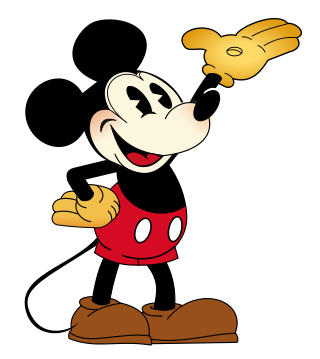
Mickey Mouse is an American cartoon character co-created in 1928 by Walt Disney and Ub Iwerks. The longtime icon and mascot of the Walt Disney Company, Mickey is an anthropomorphic mouse who typically wears red shorts, large shoes, and white gloves. He is often depicted alongside his girlfriend Minnie Mouse, his pet dog Pluto, his friends Donald Duck and Goofy and his nemesis Pete among others.

Ubbe Ert Iwerks, known as Ub Iwerks, was an American animator, cartoonist, character designer, inventor, and special effects technician, known for his work with Walt Disney Animation Studios in general, and for having worked on the development of the design of the character of Mickey Mouse, among others. Born in Kansas City, Missouri, Iwerks grew up with a contentious relationship with his father, who abandoned him as a child. Iwerks met fellow artist Walt Disney while working at a Kansas City art studio in 1919.

Pluto is an American cartoon character created by the Walt Disney Company. He is a yellow-orange color, medium-sized, short-haired dog with black ears. Unlike most Disney characters, Pluto is not anthropomorphic beyond some characteristics such as facial expression. He is Mickey's pet. Officially a mixed-breed dog, he made his debut as a bloodhound in the Mickey Mouse cartoon The Chain Gang. Together with Mickey Mouse, Minnie Mouse, Donald Duck, Daisy Duck, and Goofy, Pluto is one of the "Sensational Six"—the biggest stars in the Disney universe. Though all six are non-human animals, Pluto alone is not dressed as a human.

Goofy is a cartoon character created by the Walt Disney Company. He is a tall, anthropomorphic dog who typically wears a turtle neck and vest, with pants, shoes, white gloves, and a tall hat originally designed as a rumpled fedora. Goofy is a close friend of Mickey Mouse and Donald Duck, and is Max Goof's father. He is normally characterized as hopelessly clumsy and dim-witted, yet this interpretation is not always definitive; occasionally, Goofy is shown as intuitive and clever, albeit in his own unique, eccentric way.

Minnie Mouse is an American cartoon character created by the Walt Disney Company. As the longtime sweetheart of Mickey Mouse, she is an anthropomorphic mouse with white gloves, a red or pink bow, blue polka-dotted dress, white bloomers and yellow low-heeled shoes occasionally with ribbons on them. The Mickey Mouse comic strip story "The Gleam" by Merrill De Maris and Floyd Gottfredson first gave her full name as Minerva Mouse, although this is seldom used.

The golden age of American animation was a period in the history of U.S. animation that began with the popularization of sound synchronized cartoons in 1928 and gradually ended in the 1960s when theatrical animated shorts started to lose popularity to the newer medium of television. Animated media from after the golden age, especially on television, were produced on cheaper budgets and with more limited techniques between the late 1950s and 1980s.

Fleischer Studios was an American animation studio founded in 1929 by brothers Max and Dave Fleischer, who ran the pioneering company from its inception until its acquisition by Paramount Pictures, the parent company and the distributor of its films. In its prime, Fleischer Studios was a premier producer of animated cartoons for theaters, with Walt Disney Productions being its chief competitor in the 1930s.
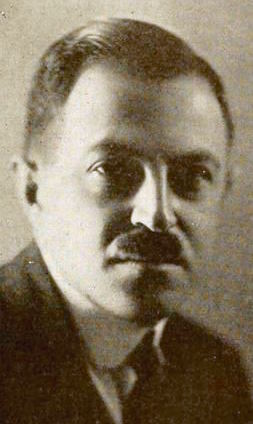
Max Fleischer was a Polish-American animator and studio owner. Born in Kraków, Poland, Fleischer immigrated to the United States where he became a pioneer in the development of the animated cartoon and served as the head of Fleischer Studios, which he co-founded with his younger brother Dave. He brought such comic characters as Koko the Clown, Betty Boop, Popeye, and Superman to the movie screen, and was responsible for several technological innovations, including the rotoscope, the "follow the bouncing ball" technique pioneered in the Ko-Ko Song Car-Tunes films, and the "stereoptical process". Film director Richard Fleischer was his son.

Merrie Melodies is an American animated comedy short film series distributed by Warner Bros. Pictures. It was part of the Looney Tunes franchise and featured many of the same characters. It originally ran from August 2, 1931, to September 20, 1969, during the golden age of American animation, though it was revived in 1979, with new shorts sporadically released until June 13, 1997. Originally, Merrie Melodies placed emphasis on one-shot color films in comparison to the black-and-white Looney Tunes films. After Bugs Bunny became the breakout character of Merrie Melodies and Looney Tunes transitioned to color production in the early 1940s, the two series gradually lost their distinctions and shorts were assigned to each series randomly.

Betty Boop is an animated cartoon character designed by Grim Natwick at the request of Dave Fleischer. She originally appeared in the Talkartoon and Betty Boop film series, which were produced by Fleischer Studios and released by Paramount Pictures. She was featured in 90 theatrical cartoons between 1930 and 1939. She has also been featured in comic strips and mass merchandising.
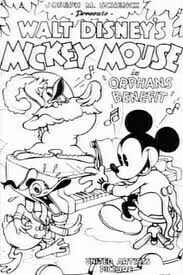
Orphan's Benefit is an American animated short film produced by Walt Disney Productions in black-and-white. It was first released in 1934 and was later remade in Technicolor in 1941 under the corrected title Orphans' Benefit. The cartoon features Mickey Mouse and his friends putting on a vaudeville-style benefit show for a group of unruly orphans. It contains a number of firsts for Disney, including the first time in which Mickey Mouse and Donald Duck appear together, and was the 68th Mickey Mouse short film to be released, and the sixth of that year. It was also the cartoon which had the first story to be written that featured Donald Duck, though it was the second Donald Duck short to be produced and released, after The Wise Little Hen.
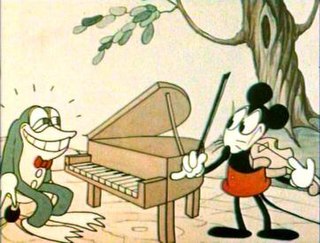
Flip the Frog is an animated cartoon character created by American animator Ub Iwerks. He starred in a series of cartoons produced by Celebrity Pictures and distributed by Metro-Goldwyn-Mayer from 1930 to 1933. The series had many recurring characters, including Flip's dog, the mule Orace, and a dizzy neighborhood spinster.
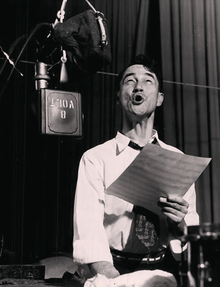
Vance DeBar Colvig Sr., known professionally as Pinto Colvig, was an American voice actor, cartoonist, and circus and vaudeville performer whose schtick was playing the clarinet off-key while mugging. Colvig was the original performer of the Disney characters Goofy and Pluto, as well as Bozo the Clown and Bluto in Popeye. In 1993, he was posthumously made a Disney Legend for his contributions to Walt Disney Films, including Snow White and the Seven Dwarfs and Fun and Fancy Free.
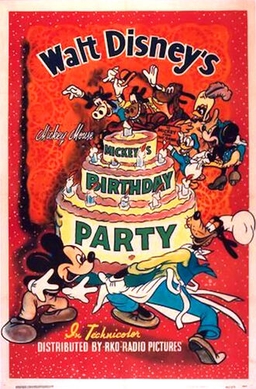
Mickey's Birthday Party is an American animated short film directed by Riley Thomson, produced by Walt Disney Productions and distributed by RKO Radio Pictures. The 114th short to feature Mickey Mouse, it was released on February 7, 1942. The animated film was directed by Riley Thomson and animated by Les Clark, James Moore, Ken Muse, Armin Shaffair, Riley Thompson, Bernie Wolf, and Marvin Woodward. It was the 116th short in the Mickey Mouse film series to be released, and the first for that year.
Cal Dalton was an American animator and director at Warner Bros. Cartoons.
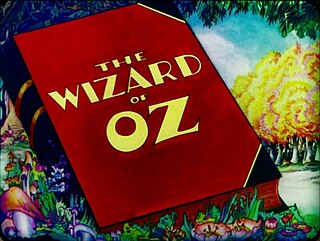
The Wizard of Oz is a 1933 Canadian-American animated short film directed by Ted Eshbaugh. The story is credited to "Col. Frank Baum." Frank Joslyn Baum, a lieutenant colonel in the United States Army and eldest son of writer L. Frank Baum, was involved in the film's production, and may have had an involvement in the film's script, which is loosely inspired by the elder Baum's 1900 novel, The Wonderful Wizard of Oz. It runs approximately eight and a half minutes and is nearly wordless, working mainly with arrangements of classical music created by Carl W. Stalling. The film is considered to potentially be the first full color animated film.
Ted Eshbaugh was an American animation filmmaker, best known as one of the first filmmakers to experiment with color sound cartoons in the early 1930s, which included Goofy Goat and The Wizard of Oz.
Wilson David "Pete" Burness was an American animator and animation director. He was perhaps best known for his work on the Mr. Magoo series. He also contributed to the Tom and Jerry series, Looney Tunes, Merrie Melodies, and Rocky and His Friends.

Hawaiian Holiday is a 1937 American animated short film produced by Walt Disney Productions and released by RKO Radio Pictures. The cartoon stars an ensemble cast of Mickey Mouse, Minnie Mouse, Pluto, Donald Duck, and Goofy while vacationing in Hawaii. The film was directed by Ben Sharpsteen, produced by John Sutherland and features the voices of Walt Disney as Mickey, Marcellite Garner as Minnie, Clarence Nash as Donald, and Pinto Colvig as Goofy and Pluto. It was Disney's first film to be released by RKO, ending a five-year distributing partnership with United Artists.
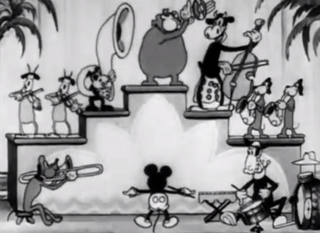
Blue Rhythm is a 1931 Mickey Mouse animated short film directed by Burt Gillett, produced by Walt Disney Productions and distributed by Columbia Pictures. It was the 31st short in the Mickey Mouse film series, and the seventh of that year. The plot focuses on a multifaceted performance of W. C. Handy's "St. Louis Blues". The film features the voices of Walt Disney as Mickey and Marcellite Garner as Minnie Mouse.
References
- ↑ Bowles, James (January 1932). "At Last - Movie Cartoons in Color". Modern Mechanix: 70–73, 178–179. Retrieved July 12, 2023.
- ↑ "Youthful Producer Gets His Pet Into State, L. A." Variety. No. 13. Archive.org. March 8, 1932. p. 70. Retrieved July 13, 2023.